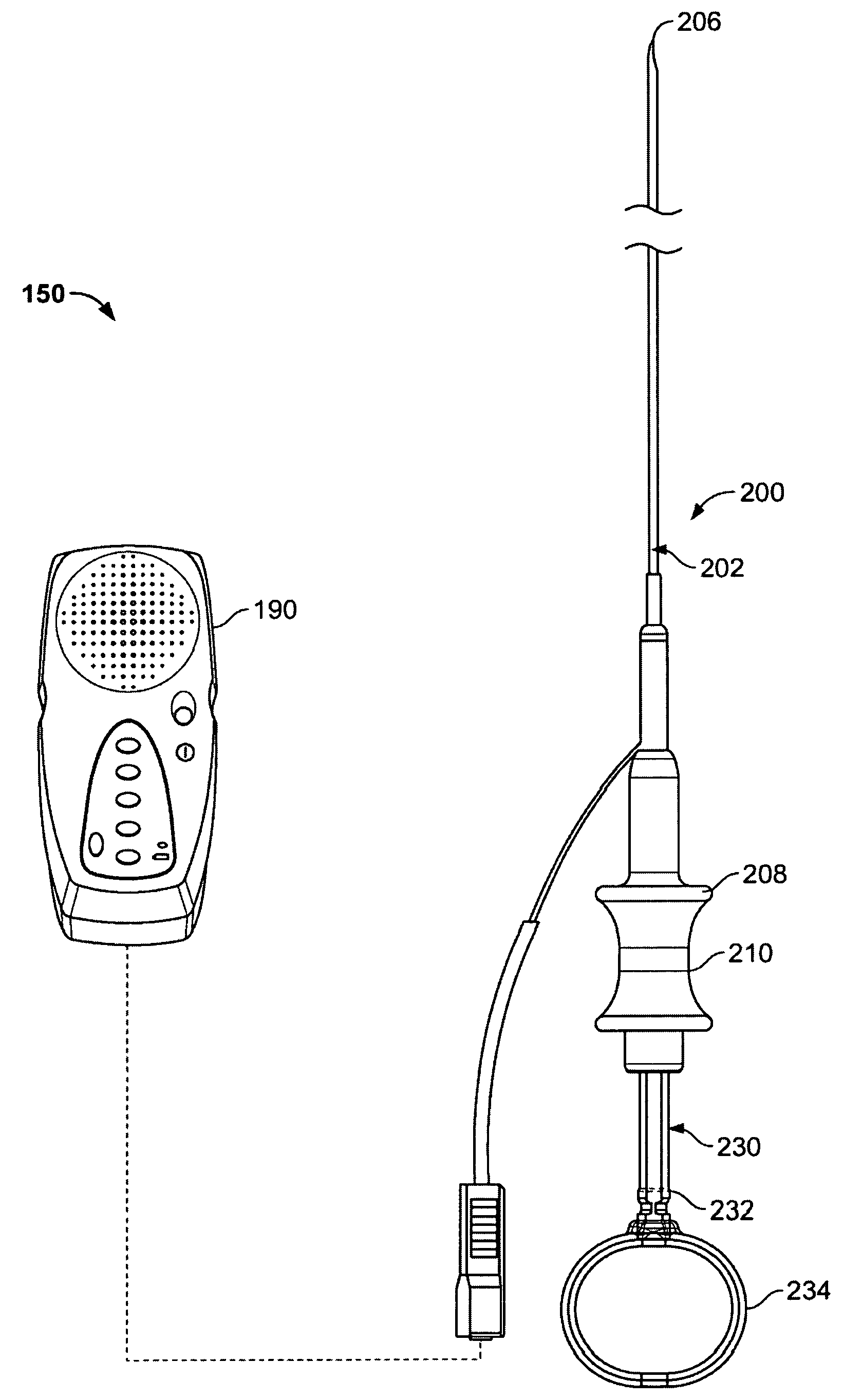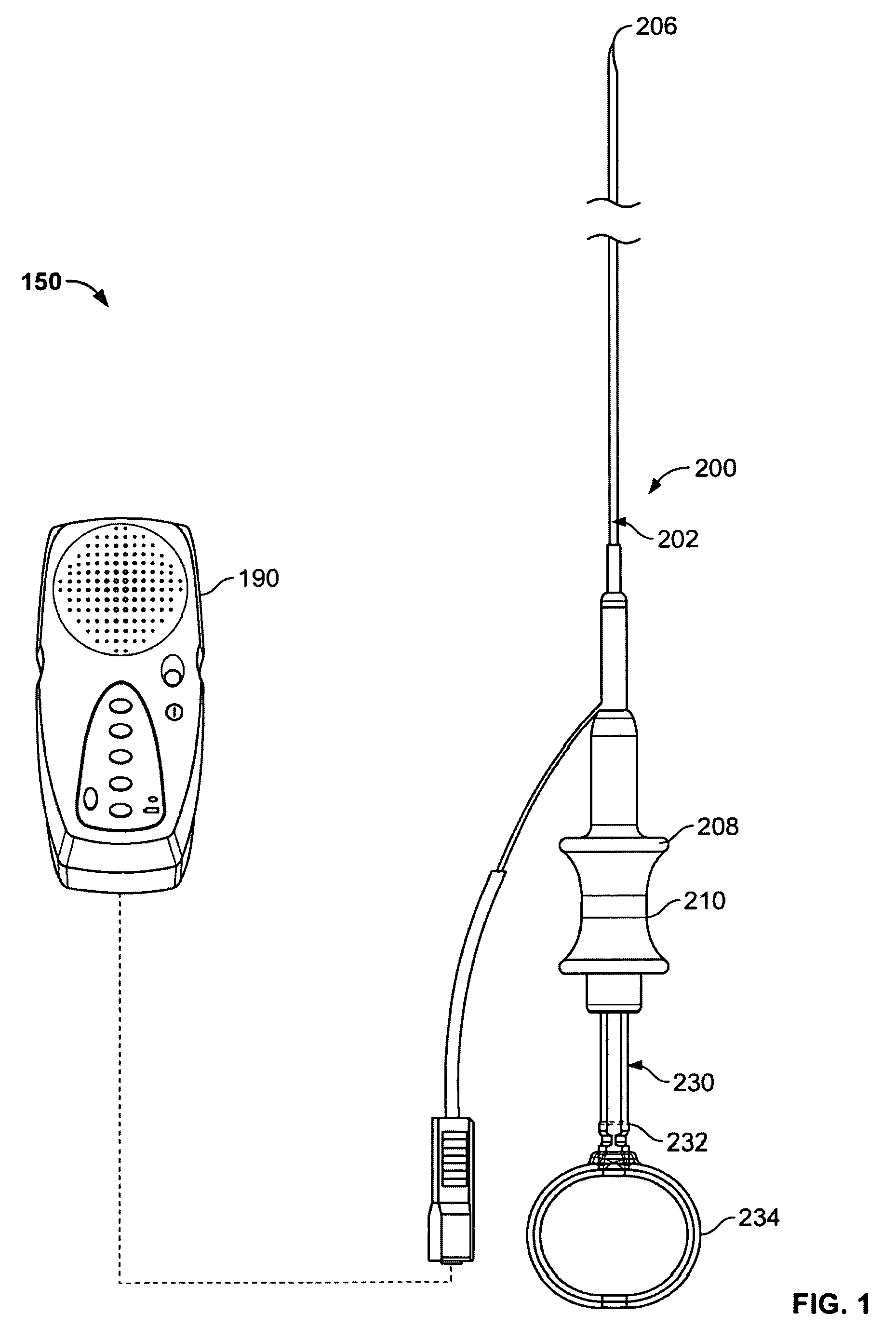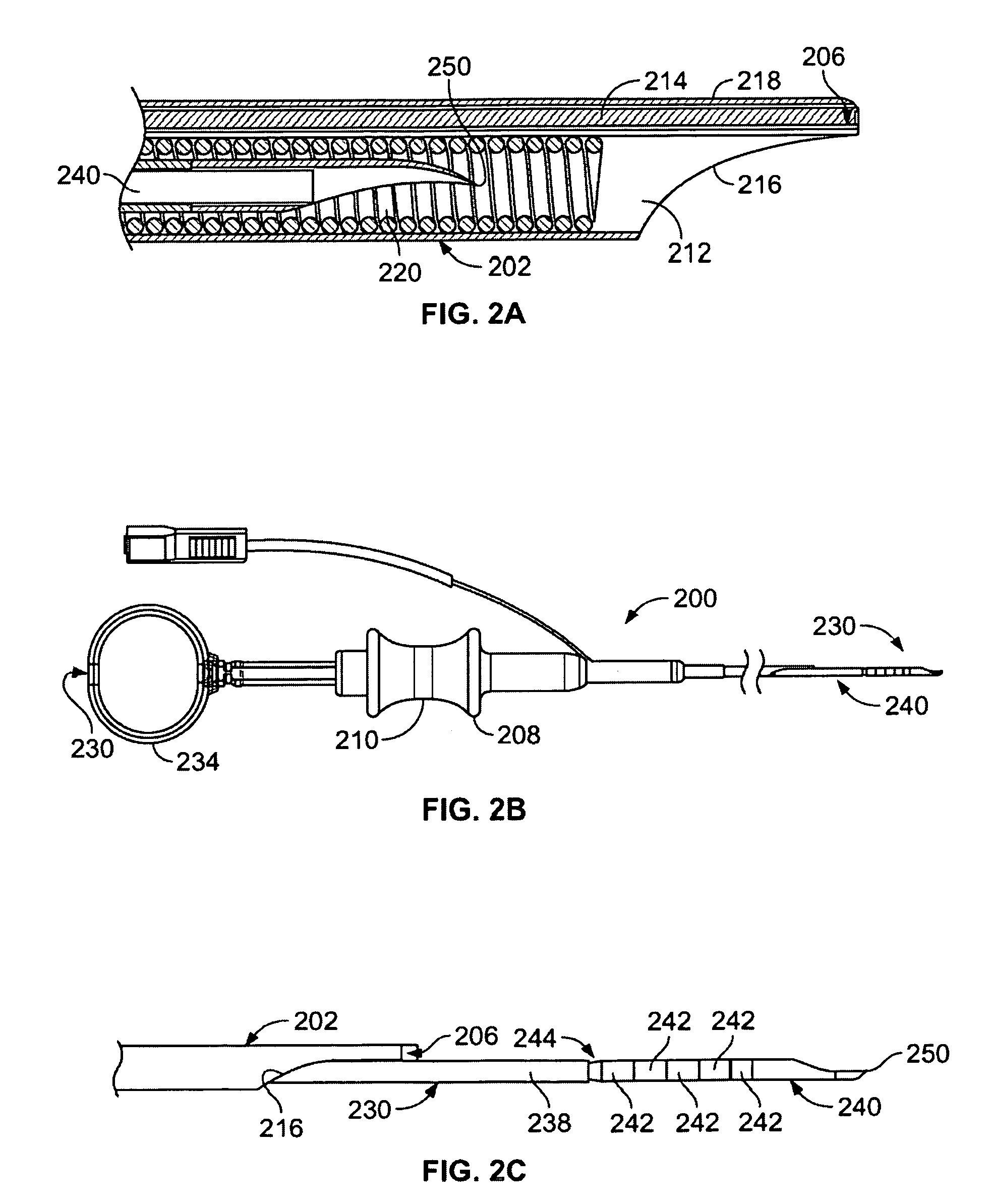Puncture resistant catheter for sensing vessels and for creating passages in tissue
a sensing vessel and catheter technology, applied in the field of catheters, can solve the problems of escalating complications, significant bleeding, and risks in many types of scope-based procedures, and achieve the effect of improving the ability of the sensing assembly and improving the ability to see the tip
- Summary
- Abstract
- Description
- Claims
- Application Information
AI Technical Summary
Benefits of technology
Problems solved by technology
Method used
Image
Examples
Embodiment Construction
[0027]FIG. 1 illustrates a view of a variation of an inventive system 150 incorporating various features as described herein. The system generally includes a device 200 having an elongate sheath 202 with a sensing element 206 at a far end of the sheath 202. The far end of the sheath 202 shall be atraumatic so that movement of the sensing element 206 across tissue does not cause damage to the tissue. The elongate sheath 202 includes a working device extending therethrough. In this variation, the working device comprises a needle assembly 230. The device 200 is also coupled to (or connectable to) a control system 190 that is configured to assist the physician in scanning the tissue site. In the present variation, the control system 190 assists the physician in detecting whether blood vessels are at or near a particular target site. The control system 190 may be any type of unit that confirms the presence or absence of blood vessels. As such, it may be a thermal based system (incorpora...
PUM
 Login to View More
Login to View More Abstract
Description
Claims
Application Information
 Login to View More
Login to View More - R&D
- Intellectual Property
- Life Sciences
- Materials
- Tech Scout
- Unparalleled Data Quality
- Higher Quality Content
- 60% Fewer Hallucinations
Browse by: Latest US Patents, China's latest patents, Technical Efficacy Thesaurus, Application Domain, Technology Topic, Popular Technical Reports.
© 2025 PatSnap. All rights reserved.Legal|Privacy policy|Modern Slavery Act Transparency Statement|Sitemap|About US| Contact US: help@patsnap.com



